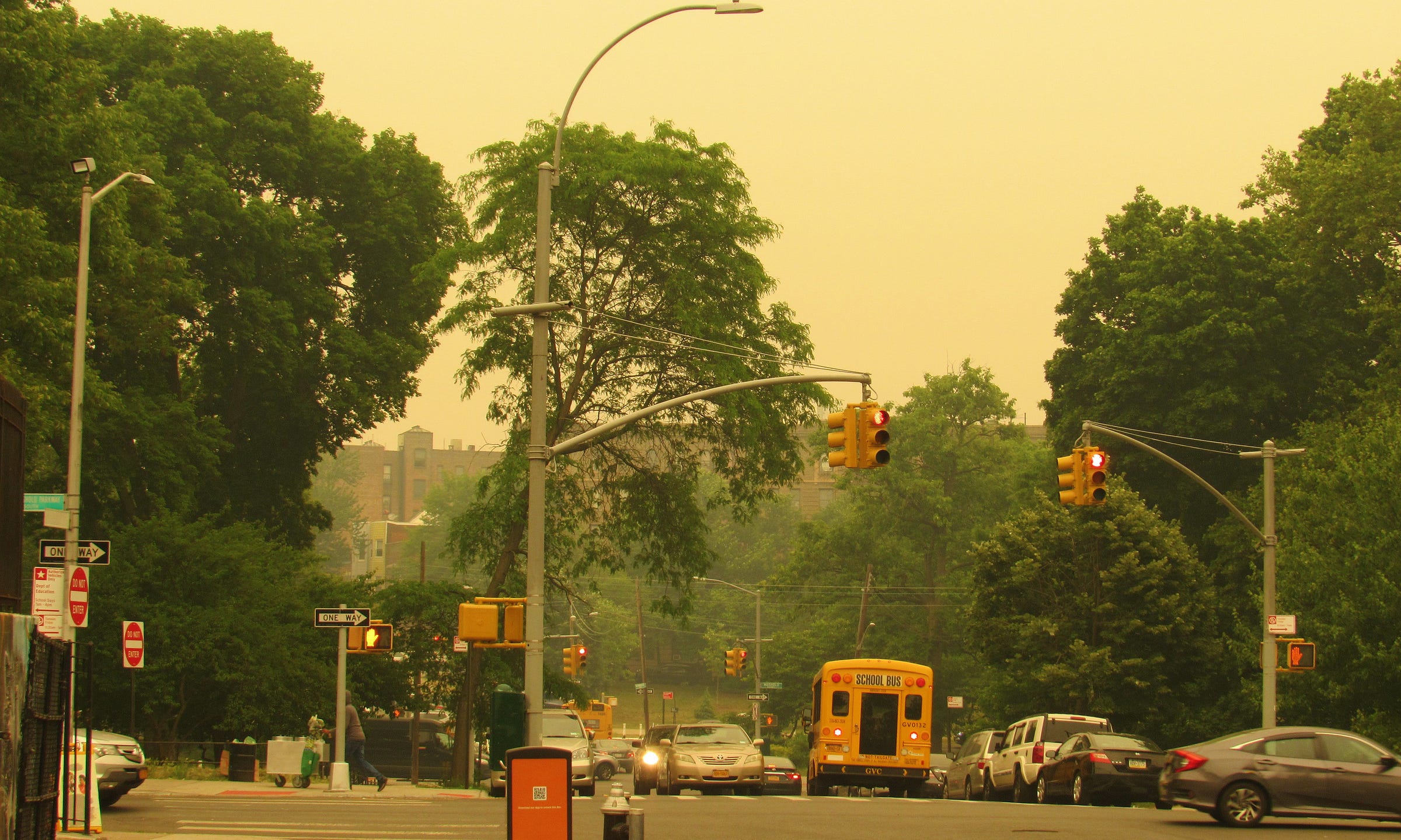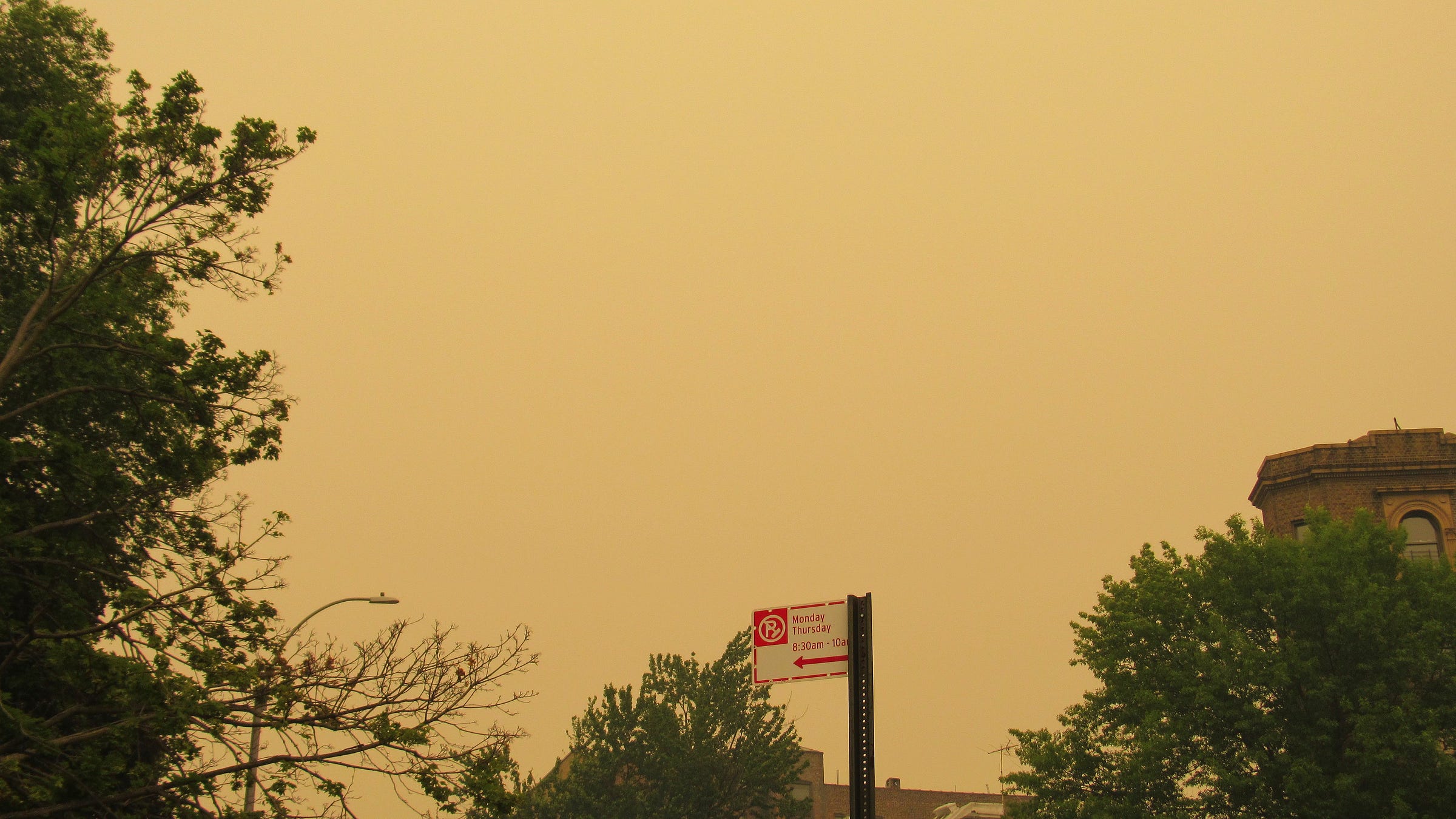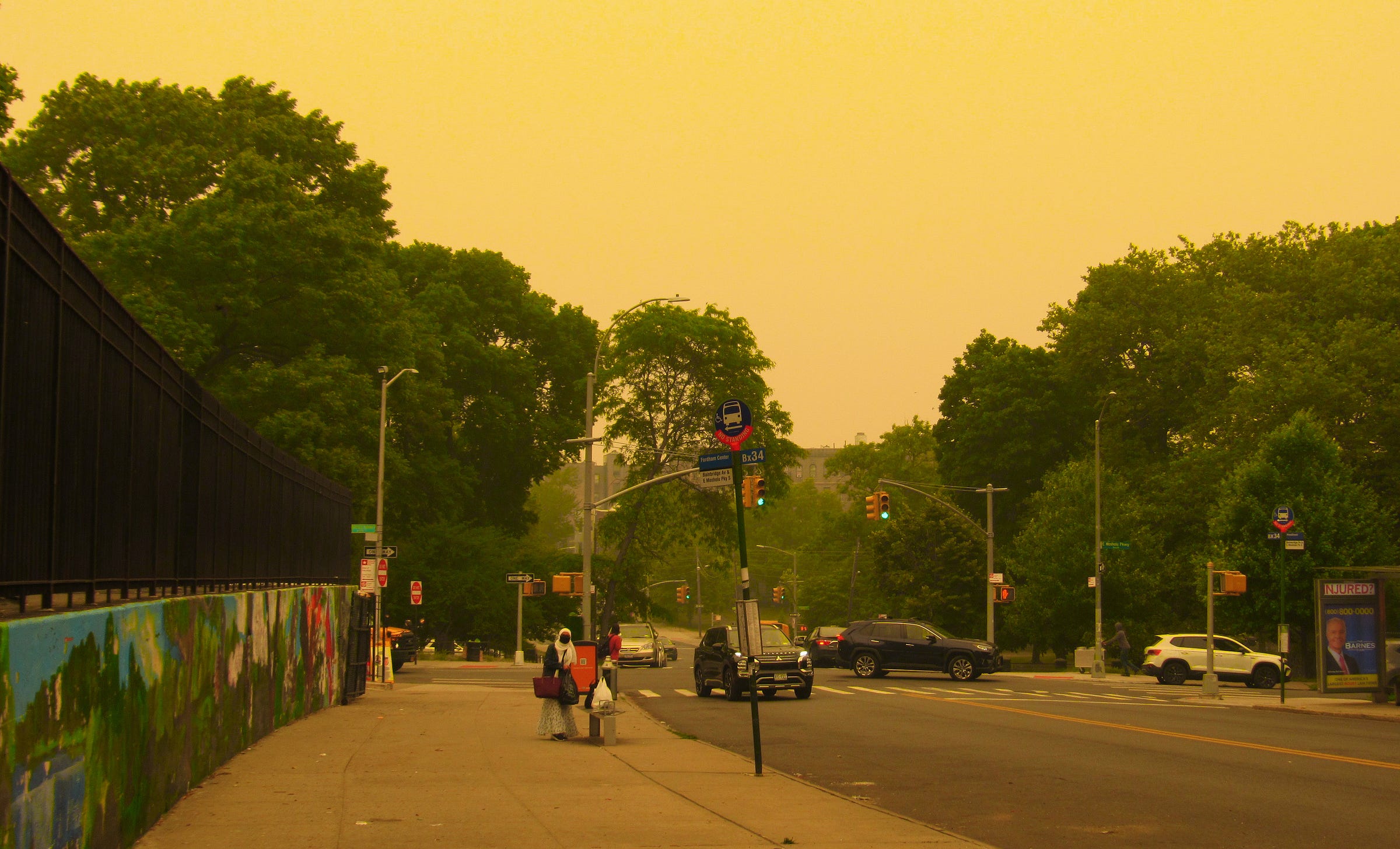On June 7, I walk around my community and photograph.
The air quality in the Bronx is hazardous.
The neighborhood is silent again.
Everyone is masked again.
No kids are playing in the park down the block or on the grass along the parkway.
The sun is too bright.
The sky is too yellow and dark and eerie.
I am on the phone with my father, and we talk about Dominican guerillas, stopping sporadically to comment on the sky and sun outside each of our apartments.
There are wildfires in Ottawa, Canada, and the wind blows the air south and south until smoke and haze and pollutants cover our boroughs, smoke traveling hundreds of miles to find us.
I smell firewood for days.
Our air, which often hovers between unhealthy for sensitive groups or moderate, is hazardous for several days.
Last week the index reaches 382.
By Friday afternoon, rain is expected and the air is better.
New Yorkers are not the first to inhale hazardous air.
Siddika reminds me again and again.
For the global south, the threat to the air they breathe occurs daily.
A friend sends me the latest issue of The Funambulist.
It is my first time reading the magazine, and the issue focuses on forest struggles worldwide, on “the simultaneity of political struggles taking place in forests, and political struggles taking place for the forests.”
The issue highlights the art of Uýra, an indigenous artist, educator, and biologist in the Central Amazon. Uýra writes about Brazil’s record of having the highest deforestation rates worldwide.
They describe how their exhibit “A Última Floresta,” is a protest against the state’s destruction of the Amazon.
“Future heat increases the risk of decimating all populations, unless people can migrate to areas with a more balanced climate, such as the forests. However, for this to be possible, the forests must still exist.”
Wildfires are on the rise worldwide. Millions and millions and millions of acres burn every year.
Ecological, man-made disasters burn our planet:
Bolivia. India. Turkey. Brazil.
Greece. France. Italy.
Lebanon. Algeria.
Russia. Morocco. Korea.
Canada. Argentina. Venezuela. Ecuador.
It is easy to forget New York City is not the world’s center. Easy to ignore that despite our hazardous or moderate or unhealthy air, we are not the most marginalized in our world’s ecological crisis.
Black and Brown indigenous communities resist, and are killed, every day as they fight against ecological devastation, deforestation, while also feeling the consequences of Western, corporate greed.
Every day they fight for access to clean air and water.
Adivasis in India resist state-sanctioned efforts to erase their forests and traditions and histories and stories.
Indigenous communities in West Papua struggle against the oil palm industry.
Black indigenous communities in the Caribbean, namely St. Vincent, known as the Black Caribs, resisted French, British, and Dutch attempts to control their forests. Enslaved African women and men and children also resisted and created maroons.
“Even as British administrators and armies moved towards enclosure of the forests, whether through legislation or physical attempts at clearing out the inhabitants (both human and non-human), the Black Caribs maintained a potent communion with the space throughout,” writes Thabisile Griffin in “A Land Mapped Out/ A Map That Moves: Black Indigenous Forest-Life.”
“The Black indigenous population on the island would not just refuse logics of large-scale production which fundamentally devalued and rendered the forests non-alive, but they stayed in the woods and transformed them into sites of resource, mobility, subversion, familial networks, and possibility.”
My father and I talk about guerillas and armed warfare and the geography of Ayiti.
We talk about Taino and Haitian and Dominican resistance and subversion, of Caribbean revolution. Of the knowledge and relationship our ancestors had to trees and plants and herbs.
I keep thinking about what it means to exist in a privileged body, in a privileged geographical space, breathing the Bronx’s already normally polluted air in a burning world.
What does it mean to keep building despite our burning planet?
How has/is the global south resisted/resisting?
How have Black people always fought against ecological crises?
How has the Caribbean, Ayiti, always resisted threats to their lives and lands and ecosystems?
How do we keep our bodies safe?















you crushed this, olga. every word begged to be read slowly and with care. your photos are a great addition, to this piece certainly, but for so much of your recent work. so happy i get to read your stuff!